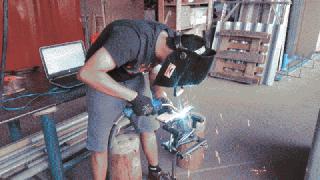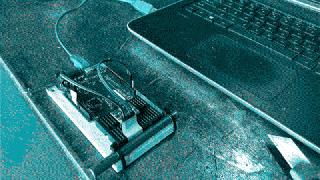Bionic Exo
For my graduation project, I continued to work on the Bionic chair designed by Govert Flint ,an artifact designed to embody happiness within large and full body movements. His initial concept was to design a chair to control screens and devices using one’s own body movements to ensure that we do not leave our bodies out of context in the tech-dominant future and to remain active while we work in front of screens. My direction for this chair was to design it for people with chronic disabilities.

Govert Flint's Prototype
Research
Neuroscience showed strong-evidence that large muscular movements helped people with chronic pain move freely with reduced pain signals. After speaking/interviewing patients with similar issues, it was evident that large movements accompanied with the right amount of rest helped with the recovery process, especially with the pain signals coming from small finger movements when using screens and devices for exended periods. These insights helped build the movement of the chair/device.

Interviews with Patients
Build Process
To design the movement mechanisms of the device, I decided to iterate on my designs by building quick prototypes of the chair and testing different attributes like posture, freedom of movement and comfort. Welding steel tubes was something I had to learn from scratch, but within a few weeks I was able to quickly build mock chairs to test my ideas.

Building Time
Concept
To visualize the movements of the device, I hooked it up to a computer with an arduino+gyro , so that the chair could be used to play games which focus on rehabilitation and also as a seating device to work with computers at the same time.
